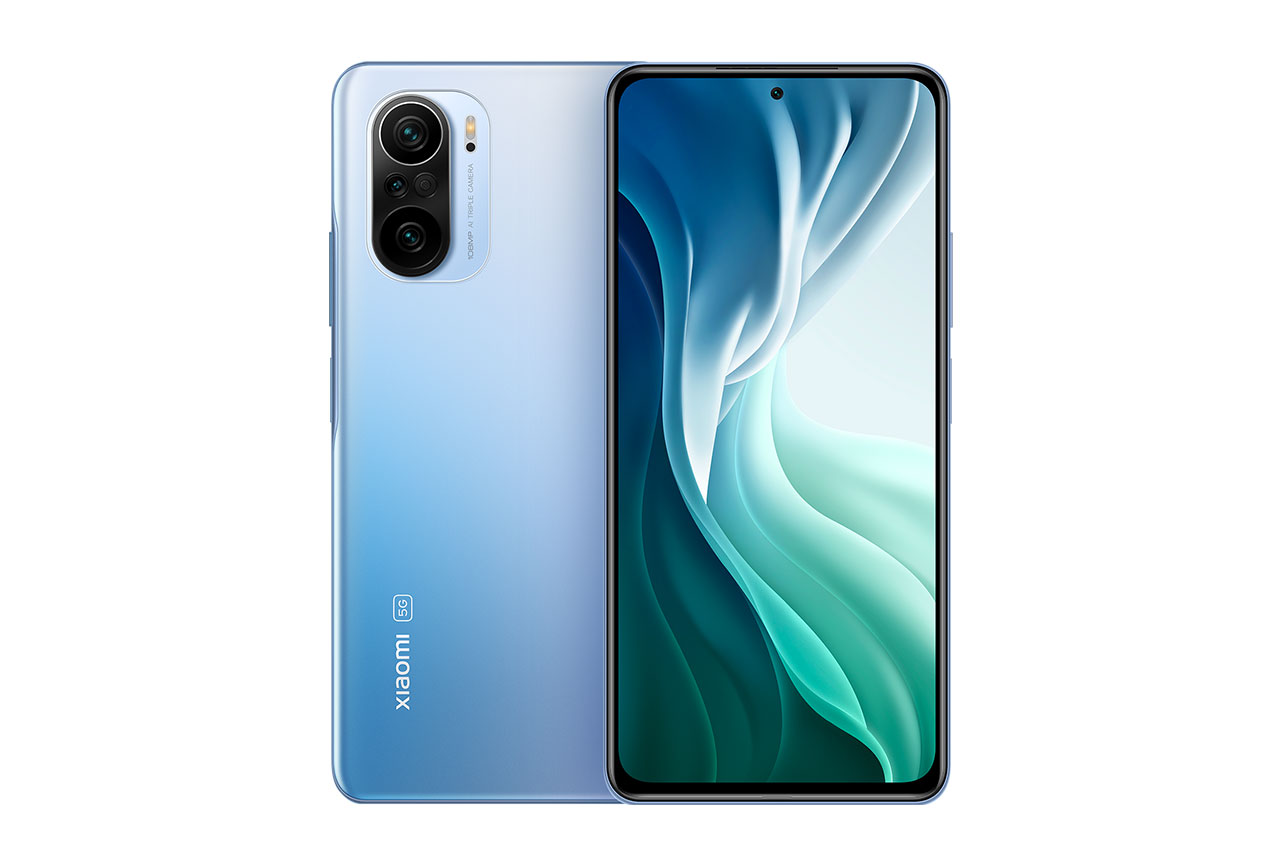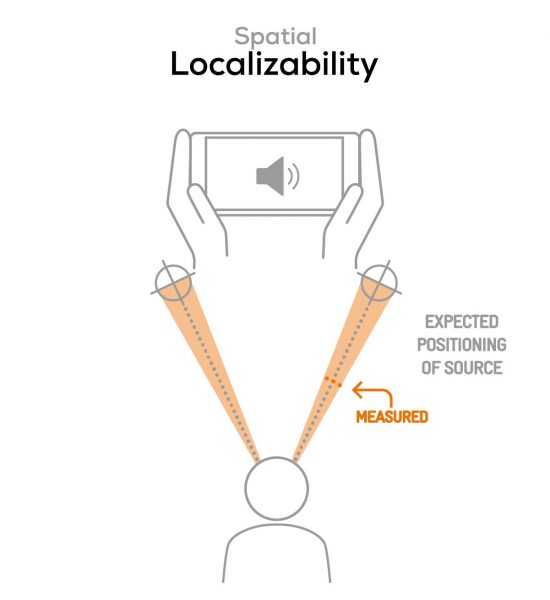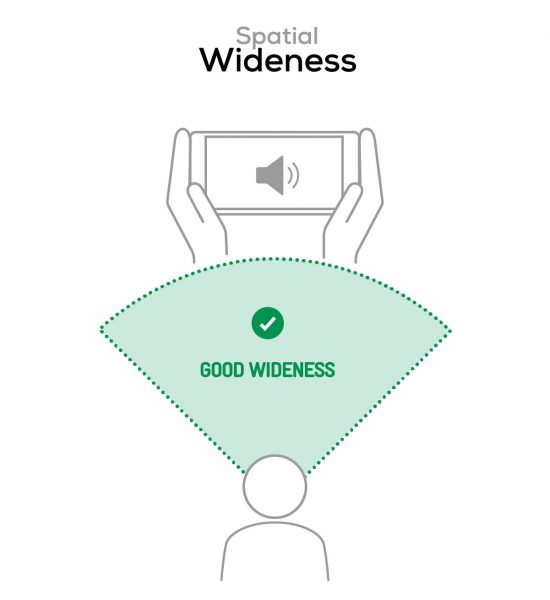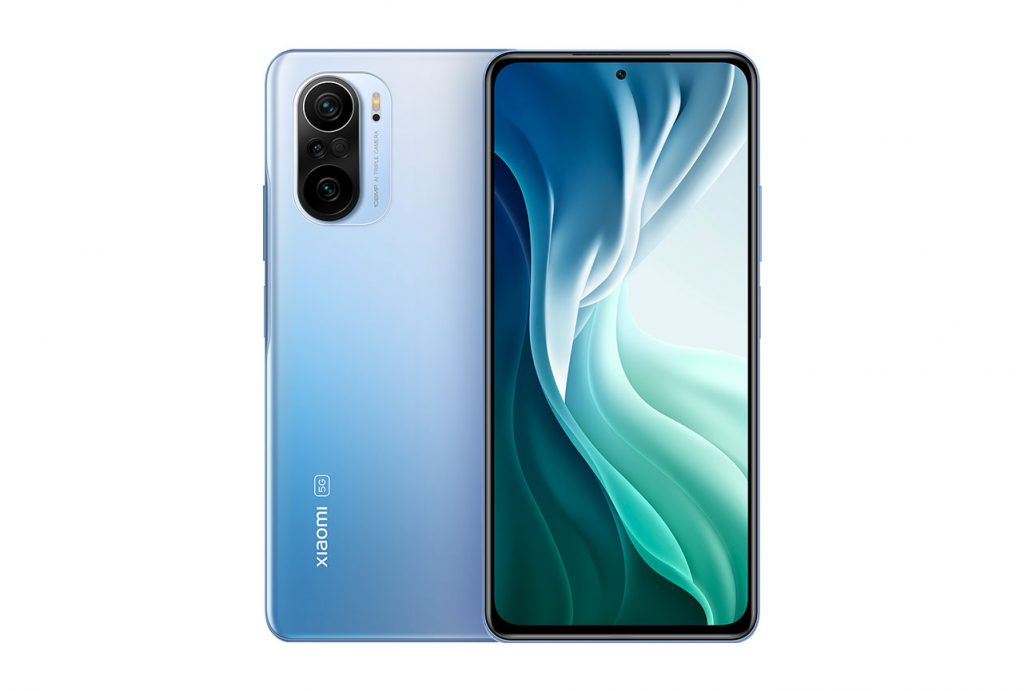Within Xiaomi’s latest Mi line-up, the 11i is a slightly more affordable version of the Mi 11, featuring identical camera specs (including the large 108 MP sensor in the primary module and the 5G compatibility) but a smaller and lower-res screen, as well as an 8 MP ultra-wide camera instead of the Mi 11’s 13 MP version. Just like the standard Mi 11 and its lavish variant, the Mi 11 Ultra, it is powered by the top-of-the-line Qualcomm Snapdragon 888 chipset.
In the audio department, the Mi 11i is equipped with two speakers to deliver a Dolby Atmos, Hi-Res Audio certified playback. As a recording device, it is interesting to note that the phone offers Audio Zoom when filming videos. To know more about this technology, feel free check out our article on this subject.
We put the Xiaomi Mi 11i through our rigorous DXOMARK Audio test suite to measure its performance both at playing audio back through its built-in speakers, and at recording sound using its built-in microphones. In this review, we will break down how it fared in a variety of tests and several common use cases.
Audio specifications include:
- Two speakers
- Dolby Atmos
- Audio Zoom
- No headphone jack
About DXOMARK Audio tests: For scoring and analysis in our smartphone audio reviews, DXOMARK engineers perform a variety of objective tests and undertake more than 20 hours of perceptual evaluation under controlled lab conditions. This article highlights the most important results of our testing. Note that we evaluate both Playback and Recording using only the device’s built-in hardware and default apps. (For more details about our Playback protocol, click here; for more details about our Recording protocol, click here.)
Test summary
Scoring
Sub-scores and attributes included in the calculations of the global score.

Xiaomi Mi 11i


 137th
137th 39th
39thPlayback
Pros
- Good maximum and minimum volumes
- Wide sound stage in landscape mode
- Correct punch and bass precision, despite the lack of low end
Cons
- Prominence of upper midrange frequencies
- Low- and high-end extension are both limited
Recording
Cons
- Dynamics are affected by compression when recording in loud environments.
While the Xiaomi Mi 11i’s global score of 66 makes it an average audio performer considering all the smartphones we’ve tested to date, it ranks considerably higher when taking into account its price range.
Audio played back through the Mi 11i’s built-in speakers offers good maximum volume and intelligible minimum volume, appreciable wideness in landscape mode, correct punch, and decent bass precision despite the lack of low-end. Speaking of shortcomings, high-end extension is also limited, and upper midrange appears too prominent.
Just like its luxurious sibling, our protagonist fares much better as a recording device. Audio recorded with the Xiaomi Mi 11i exhibits excellent volume and timbre characteristics in most use cases, as well as immersive and realistic spatial attributes in life videos (filmed in landscape mode with the rear cameras). That all said, dynamics are hindered by a perceivable compression when recording in loud environments.
Sub-scores explained
The DXOMARK Audio overall score of 66 for the Xiaomi Mi 11i is derived from its Playback and Recording scores and their respective sub-scores. In this section, we’ll take a closer look at these audio quality sub-scores and explain what they mean for the user.
Playback

Timbre
Xiaomi Mi 11i
58
89
Timbre tests measure how well a phone reproduces sound across the audible tonal range and takes into account bass, midrange, treble, tonal balance, and volume dependency.
Overall, the Xiaomi Mi 11i does a decent job of reproducing the frequency spectrum, with a correct presence of treble, and fairly consistent midrange. Its score of 58 puts it in the range of its predecessor, the Xiaomi Mi CC9 Pro Premium Edition, or the Google Pixel 5, which earned a 56.
Playback could benefit from more high- and low-end extension, and less upper midrange. When listening at soft volumes, a considerable lack of upper frequencies makes the tonal balance sound muffled, whereas at maximum volume, the major lack of low mids and bass makes it sound particularly midrange-oriented. In terms of use cases, the spectrum is most faithfully reproduced when watching movies, or listening to classical music.

Dynamics
Xiaomi Mi 11i
64
81
DXOMARK’s dynamics tests measure how well a device reproduces the energy level of a sound source, and how precisely it reproduces bass frequencies.
The Mi 11i’s built-in speakers deliver fairly impactful dynamics, with accurate bass precision despite the limited low-end extension, and correct punch, except at maximum volume. Attack is decent, but could do with a little more sharpness to ensure a better restitution of transients. In general, audio sounds most dynamic at nominal volume, when playing games, watching movies… and listening to hip hop!

Spatial
Xiaomi Mi 11i
60
88
The sub-attributes for perceptual spatial tests include localizability, balance, distance, and wideness.
The Xiaomi Mi 11i turns in an average spatial showing in playback. While the sound field wideness is appreciable, localizability and distance, although above-average, are both impaired by the lack of upper spectrum information: sources are indeed harder to localize precisely, and sound somewhat farther than they should.


On another note, balance between the left and right channels is shifted towards the left speaker in landscape mode, that is, towards the upper speaker in portrait mode. Once again, the built-in speakers give their best when playing games or hip hop music, and when the phone’s held in landscape mode.

Volume
Xiaomi Mi 11i
64
91
Volume tests measure both the overall loudness a device is able to reproduce and how smoothly volume increases and decreases based on user input.
Volume steps are evenly distributed across the volume scale, except for the three loudest ones, which are essentially the same level. Maximum volume is good, and minimum volume is well optimized in order to allow highly dynamic content, such as classical music or movies, to remain intelligible.
| Hip-Hop | Classical | |
| Xiaomi Mi 11i | 73.4 dBA | 71.6 dBA |
| Xiaomi Mi 11 | 74.7 dBA | 71.3 dBA |
| Samsung Galaxy S21 Ultra 5G (Exynos) | 73.2 dBA | 71 dBA |
Artifacts tests measure how much source audio is distorted when played back through a device’s speakers. Distortion can occur both because of sound processing in the device and because of the quality of the speakers.
At nominal volume, no noise or spectral artifacts (distortion) are perceivable. Temporal artifacts on the other hand, such as compression, can even be heard at that listening level. By contrast, at maximum volume, compression remains fairly discreet, whereas noise and bass distortion become particularly noticeable.
Recording

Timbre
Xiaomi Mi 11i
81
91
As a recording device, the Xiaomi Mi 11i excels at capturing timbre, earning a sub-score of 81. The tonal balance is excellent, with particularly consistent midrange allowing voices to sound pleasingly realistic.
Treble presence is very correct, but could benefit from a little more brightness. Recordings made in loud environments could also use more high- and low-end extension. Finally, memos sound slightly darker, but are still pleasant. Speaking of use cases, recordings fare best in videos, both life and selfie.

Dynamics
Xiaomi Mi 11i
63
81
The Xiaomi Mi 11i turns in a fairly good performance in recording dynamics. The envelope is above average, with particularly good marks in both selfie and life videos. In loud environments, however, transients are affected by a noticeable compression.
As for the signal-to-noise ratio, it fares best in quiet surroundings, such as a meeting room or a domestic scenario. In urban surroundings, the background noise isn’t sufficiently attenuated, which impairs voice intelligibility.

Spatial
Xiaomi Mi 11i
68
78
The Xiaomi Mi 11i’s microphones turn in an excellent performance in the recording spatial sub-category — who knows, maybe that Dolby collaboration has something to do with that. Life videos exhibit impressive wideness, precise localizability, and realistic distance capture, the latter faring even better in meeting recordings.
Similarly to the Mi 11 Ultra, selfie videos are less well-endowed due to a very narrow sound field, although distance and localizability remain correct.

Volume
Xiaomi Mi 11i
64
99
The Mi 11i offers decent nominal loudness, and reaches a very good maximum level without noticeable artifacts. In other words, surroundings can get pretty loud before the audio recording starts showing signs of weakness, such as distortion or dynamic compression. Unlike in spatial, the Mi 11i’s volume attributes fare best in selfie videos. Here are our test results, measured in LUFS (Loudness Unit Full Scale). As a reference, we expect loudness levels to be above -24 LUFS for recorded content:
| Meeting | Life Video | Selfie Video | Memo | |
| Xiaomi Mi 11i | -28 LUFS | -20.4 LUFS | -18.6 LUFS | -21.1 LUFS |
| Xiaomi Mi 11 | -29.2 LUFS | -21.5 LUFS | -19.6 LUFS | -20.4 LUFS |
| Samsung Galaxy S21 Ultra 5G (Exynos) | -26.8 LUFS | -20.1 LUFS | -22.5 LUFS | -22.3 LUFS |

Artifacts
Xiaomi Mi 11i
76
97
Very few sonic artifacts are noticeable, regardless of the use case. The two minor flaws are a slight clipping generated by shouting voices, and the previously-mentioned compression when recording in loud environments. It is also important to note that the built-in microphones can get occluded by the user’s hands.
Here’s a sample recording, illustrating the phone’s ability to keep sonic artifacts to a minimum:

Background
Xiaomi Mi 11i
49
60
Background recordings are very satisfactory: frequency ranges are harmoniously balanced, and no sonic artifacts are noticeable. The Mi 11i’s sub-score of 49 is well above average for this attribute, placing it 8 points away from the top-scoring phone in this category, the Apple iPhone XS Max.


Conclusion
The Xiaomi Mi 11i follows in the 11 Ultra’s audio footsteps: While its playback showing is decent, its recording performance is quite noteworthy — especially considering the phone’s price range. As a recording device, thanks to excellent volume and timbre aspects as well as both immersive and realistic spatial attributes, the Mi 11i ensures a very good sound quality across nearly every situation, from meeting room configurations to big, loud concert scenarios. And just like its luxurious elder brother, the only use case truly out of its comfort zone is filming selfie videos!



DXOMARK encourages its readers to share comments on the articles. To read or post comments, Disqus cookies are required. Change your Cookies Preferences and read more about our Comment Policy.